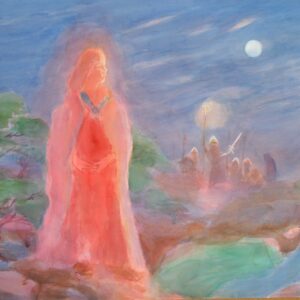Rediscovering the Sacredness of Nature: Interview with Dennis Klocek
By Dennis Klocek 28 min read
Dennis Klocek is an artist, scientist, teacher, researcher, gardener, and alchemist. He lives and works in Sacramento, California and is Director of the Consciousness Studies Program at the Rudolf Steiner College in California. He has been a great inspiration for many people over the years and has given workshops and talks on a variety of topics including weather research, alchemy, inner work and biodynamics. He is the author of several books: Biodynamic Book of Moons, Weather and Cosmos, Drawing from the Book of Nature, Seeking Spirit Vision, The Seer’s Handbook: A Guide To Higher Perception, Knowledge, Teaching and the Death of the Mysterious, and Climate: Soul of the Earth.
The following interview took place with Dennis and Jonathan Code in April whilst Dennis was in the UK giving several talks and seminars including ‘Biodynamic Agriculture as an Alchemical Path’ at Ruskin Mill over a weekend in mid-April.
Richard Swann (RS)
At the workshop over the weekend, you spoke a lot about the priestly role of the farmer. Can you speak more about that?
Dennis Klocek (DK)
Yes, sure. Rudolf Steiner had certain pictures about the scientist. He said the laboratory bench needs to become an altar. Also Steiner indicated that when a craftsman is working metal and sparks fly as he strikes it, then elemental beings are being created. Years ago someone sent me a typescript of Rudolf Steiner’s lectures on the Apocalypse. What he said there was really food for thought for me – in that work he says that people think that the Apocalypse is coming, but his view is that it has already happened. We are already in it.
In that document he said that in the ancient world, the function of the priest was to ‘speak into smoke’ in a ritual. In the future the new art will be called ‘singing into smoke’. This idea represents a different relationship that humans have to a substance. The purpose of this relationship is to give nature back to God. In order to do that there are two conditions that need to be met.
The first is to understand how Nature came to me, as a person. I then have to understand how my interacting with it changes it in such a way that I can make my actions either harmonize with nature or against the way it came to me. Plowing the soil to take off a crop is not the way that nature came to me. Work on the land is not really just getting along with nature. In many ways it is a work against nature. However if my work is only against the way nature came to me, then I am not fulfilling my sacred duty as a human which to give Nature back to God. I have to give it back transformed, but in harmony with how it came to be. So the priest is a kind of transitional consciousness between the people and God. Well, the farmer needs to have the consciousness that the action that he/she does on the piece of land that he/she works is not just to produce a product. The work has another dimension to it, which is to unite the beings on that land in the elemental world and higher elemental worlds back again to the divine.
When that happens then the products from that land have a different capacity to raise consciousness in the people who consume them. That is what I understand the purpose of biodynamics to be!
RS Would you say that the main tools then are the biodynamic preparations?
DK Yes, as a beginning, but I think there are others. You know the role of a priest has changed. Few of the sacred methods that were extant in the ancient world are useful to us today. What we inherit from the past must be employed in a different way. Unfortunately, that doesn’t seem to be a generally accepted concept, so we try to bring the things that were useful from the past intact and project them into the future. And they are not going to work, because many things have changed, even in the natural world.
From Steiner’s point of view, we are just now ready to understand the sacrifice of Christ on Golgotha. We had not been able to do that previously because we were in the Age of Darkness. That is now over and the Age of Light is available to us. However, the light is an inner light where we have to give Nature back to God instead of being dependent upon it to receive it the way it is given to us by the Divine world.
We also have an infrastructure in the way we have divided the land in terms of, for example, ownership. There are too many people in the world today to carry out ‘slash and burn’ agriculture. There are too many souls ‘to follow the deer’. Thus, we cannot have those religious experiences that were based on these life activities of people who were so close to nature for their subsistence economy.
And there are too many individuals to use common land. In the past the commons were simply what was left over from the feudal system, where the populous could somehow make a living. We have different requirements today with half the land being under concrete!
RS So do you see that the preparations might need to be re-evaluated. They might not work or are you talking about new preparations?
DK I think they will work, but they are just the beginning. What I think the real issue with the preparations is, not just what they are, but the kind of thinking that is behind them. That kind of thinking is a new beginning.
You know, the Christ principle is “Do this in re- remembrance of me, change water and wine into blood.” You know that is a central mystery in the church but it possibly ‘smacks’ of alchemy. What is says is that the priest has to deal with transubstantiation.
RS I understand that you have been developing new preparations.
DK Yes and I ask myself “Is this new preparation in line with the principles of Rudolf Steiner?” And I think that the fundamental principle for the preparations, is the same principle as medicine which is first to do no harm.
Things also have to be kept within the realm of life.
I take that to mean avoiding synthetic things and avoiding destroying the life forces in the things you are working with. This means an understanding of how they operate in life.
Alchemically in order to make medicines you need to calcine or burn substances, but you also need to know how the substances came into being in the first place, so that you can take out the toxic elements in order to move the substances into a more benign state.
Hidden in every substance is its essential nature and the work of the alchemist was to take that essential nature and purify it and save it for future combinations. When these demands are met the substances are enhanced and stay in the realm of life.

Jonathan Code (JC)
My sense is that a new synthesis of art, science and the sacred is emerging. Is that the new priesthood? There is this element where there is an artistic consciousness, which can perceive relationship. But it also has a scientific rigor.
DK That concept comes from Goethe. If you have art and science, you also have religion. It is not a religion that is imposed from the outside by say a sect or organization.
I think the scientist, craft worker, or land worker needs to synchronize what they are doing, then they become a priesthood where everybody who is engaged in that kind of sacred nature, becomes a priest. This is what in traditional culture is called ‘living in a sacred manner’.
I believe that if I go out to turn the land or sow some seeds, and I just go and do it because I am looking at my watch, that gets us foodstuffs. But I can also wait to work on a particular day with the moon in a particular position. I then wait until the door opens on the day and that the moon has ingress into the position that I am waiting for. I then wait further until the moon is on the horizon on the day of ingress. Then I am doing more than just sowing the beans. And that eye to the heavenly cycles was a priestly function in the past.
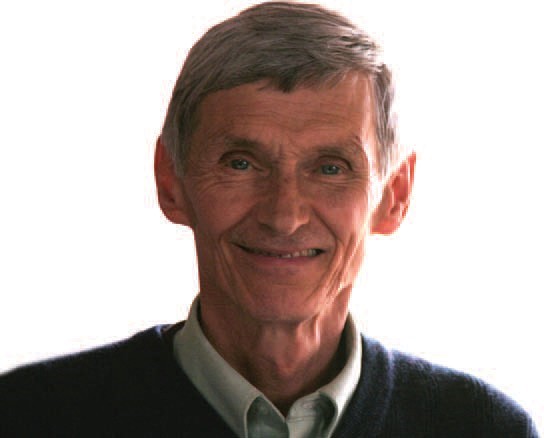
RS You are calling heaven and earth together?
DK That is right. So in the actual nuts and bolts of the daily round, you are not a priest, you are just serving humanity by growing good food. But it is in the planning and the imaginations that go behind forming operations in the year, that is what I understand is where the priestly nature comes in. The priests were meant to read the stars. I think it is a very neglected element in biodynamics. It is sort of “Oh well I have a calendar, and you know I can kind of watch the moon, but then that’s all I need to know.”
But the actual work is to take those ideas about the moon as research questions and while you are actually hoeing the beans, have in the back of your mind this other dimension of the work you are doing and then you are living in a sacred manner. You are bringing something into the soil that has a different intent, a different will.
RS Can you tell us about your work with amethyst?
DK As an example, I work with amethyst. We inherited the method of 501, the quartz preparation. This was developed for a European summer, which is cool and overcast with intermittent rain. It was actually meant to be a kind of prophylactic against mildew. 501 brings light and the ability of a plant to assimilate light.
However I live in Sacramento, California and our summer can often be four days in a row of 105° Fahrenheit (41° Celsius). We have cloudless skies typically for five months. So in the wine business, if they spray 501 they can actually just ‘burn’ their vines to a cinder.
So there is something in 501 of a kind of quickening and assimilating of the light. The question is how you can have as a principle that of the kind of light metabolism without burning the plant to a crisp in an adverse climate situation?
We use amethyst because if you look at the structure of a quartz crystal, the column grows in a very long kind of spear. And the gesture of a plant that gets sprayed with it is to push up and spear out towards the light. With the quartz you are accelerating that gesture and giving the plant a kind of ‘go to the periphery’ impulse.
That is very good if your plants are under cloudy skies and cool weather most of the summer and you want to give them that ‘go-to periphery’ impulse. But if it is very, very hot with cloudless skies and if you try to grow a cabbage in September or October and it is 105°for the two or three days in the second week of September, your cabbage is not going to be happy!
So the experiment that I first started with was to pulverize amethyst instead of quartz. Amethyst is a silicate, but in its molecular structure there is a tendency for the spearing forces to be held back. You still have quartz light properties but they are held back. They are brought into a horizontal plane rather than a vertical one. So the plants I wanted to do that with, were ones that I wanted to prevent from running up into flower as soon as the light and heat took over, such as cabbage and lettuce. I wanted them to have light assimilation, but not to go up. So I made an amethyst spray.
RS Is it the same process as the 501 with the cow horn?
DK The same process, except then I took what came out of the cow horn and then put it into red wine. In the Rosicrucian library in San Jose, I saw a Rosicrucian picture of the seven gems for different plants and planets and the substances that they could be fermented or processed in, and amethyst was processed in red wine alchemically
RS I see, so under the ground for six months, in red wine for a period, before you then stir it?
DK Yes. So when it comes out of the horn, we scrape it out, put it in a vat of red wine and that stays in there until we use it. We then use a teaspoon of that to a gallon of water, then potentize it and spray it out. We do not potentize it quite as much as an hour, as you do with the 501. But that becomes a regular spray with an eye towards spraying when the moon is moving through a water sign during early growth.
RS And what have your results been?
DK We get beautiful cabbages and lettuces even though they have been through huge heat.
RS Have you written this work up anywhere?
DK Yes it was part of a two-article series called ‘Elemental Rain Dialogues’ that I wrote in an American Biodynamic Journal, Biodynamics.
JC That is where there is this level of cognition right? Because to me just hearing it, there is something there, there is a rational process of working with the gestures of the minerals and the gestures of the time. That to me is where it becomes artistic as well, when there are principles, but they are not locked in. It is up to the farmer or gardener to be an artist as well. To be able to say “Well okay with these principles how do they apply today now in this locale?” That is what I hear in a very creative piece.
DK That is what I have been trying to work with in my own life. You know some people just need to go by the book and what it says. They need the letter of the law.
RS Apart from this, your main work has been with the weather. Was this led by questions from farmers? Or did you develop the work and then tell them about it?
DK A little of both, growers asked for forecasts but the ideas did not come from the farmers. The question actually came to me years ago when reading Maria Thun where she made a statement about a planet being at a 135° angle to some other planet. I remember reading that and I said to myself “Oh that’s crazy how come it’s not 134° or 133°, it’s 135°.” You know, in my ignorance, it seemed a bit dogmatic to me.
Then what I found over the years was by just doing phenomenology with the weather and by looking at clouds you can tell what is going to happen in the next day or two, but in order to tell what is going to happen next year, you need a whole other level of looking.
So over time I began to see there were certain patterns that I could not really describe and that they had something to do with an eclipse. That was just an intuition of mine by watching daily upper air charts with a background of information from an ephemeris. And I would see on the day of an eclipse there would be a funny geometric patterning that would happen in the northern hemisphere jet stream. And then that geometry would disappear!
So I started making charts to try to understand that, and then I started working with the idea of the Music of the Spheres and the Pythagorean monochord. Then I saw my own prejudice when I found that 135° of arc of a planet had a great relationship to agitation, in terms of Kepler’s ideas about the Harmony of the Spheres.
And suddenly a link was made for me to the work of Maria Thun that I had been negating all these years. When that hap pened I said, “Well I have to learn more about projective geometry, I have to study music theory and I have to study climate rather than weather.” And that was my awakening that I had some work to do to overcome my prejudice.
As I went through and studied those different disciplines, I began to understand what the 135°angle meant. I found ways to project it onto the earth. I found ways to read the the135°projection of that angle onto earth and to link it up to phenomena moving in time. I began slowly to find out not only what the 135°represented but that there was a whole set of angles that create a kind of grid work in the upper atmosphere that is based on the eclipse position and is persistent for six months.
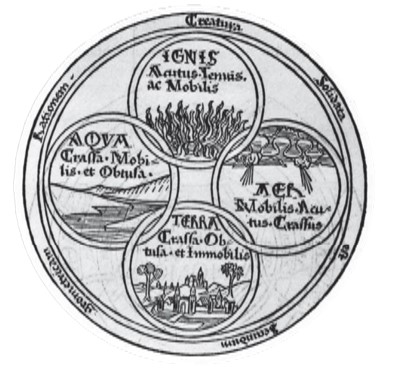
RS So you can predict the weather to six months or a year?
DK Two or three years. On the plane home tomorrow I will be finishing work on 2014.
RS You offer the service to wine growers. How successful has that been?
DK They pay me and keep signing on. I use that as my barometer of success.
RS How many years have you been doing this?
DK This is the sixth year.
JC But it is 30 years of research?
RS (to Jonathan) You have also been working with Dennis on this?
JC Yes I have been doing little bits of it. I came in a little while ago and worked on a phenomenological level. I worked on a phenomenology of the movements of the moon and the sun, and saw remarkable things in the atmosphere with the position of the sun and moon.
DK Yes, Jonathan is working here, off the coast of Europe, at much higher latitude than I am. There are certain patterns in the way the jet stream moves across the Atlantic that are very different to the way they move into my locale in Sacramento. So he was able to see a certain pattern in the polar jet stream that was a little blocked for me because in my locale the Gulf of Alaska has a much greater fetch of the ocean than it does when the polar jet comes out of Greenland here.
He was able to see a pattern, a kind of sun pattern and I kept trying to get him to understand the eclipse grid, which I am still trying to do. But it is not easy to understand that eclipse grid, and he kept saying, “I’m seeing this phenomenon, I’m seeing this phenomenon.” So finally I decided, well, I am going to see whether or not there is something in this for myself. I started plugging that in and within two weeks I saw that he had found a principle that had eluded me, because of my latitude and because of his persistence he erased my prejudice.
JC The weather systems here are so different than California because of the different factors, such as our being coastal, on an island as well as in the north. We have Greenland there and Scandinavia, so it is very complex.
But I am looking at the same charts as Dennis is looking at, which are Northern Hemisphere charts at the 500 millibar level. So I am able to look at phenomena like this high pressure we had in late March, just to watch that high set up and where it sets up and where it sets up in relationship to the sun lines.
RS All of this is in your new book Climate: Soul of the Earth?
DK The book is a whole palette of many, many case studies of drought, hurricane and flood from the past as well as the dust bowl in the United States.
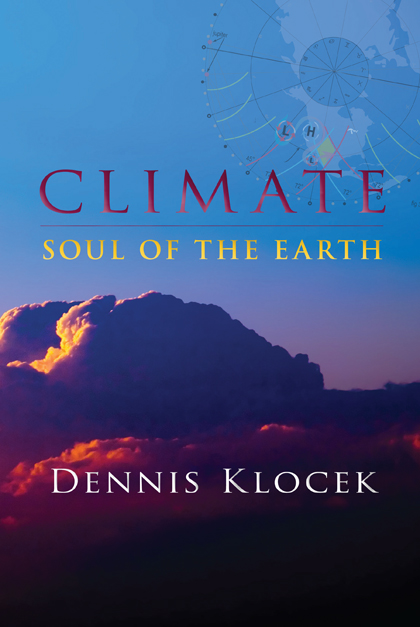
RS How much of an effect do planetary conjunctions have on the weather?
DK In the work of Maria Thun, she will give an indication to watch for rain on a certain day. And my question was always “Where?” Because somewhere on the earth it will rain! I really value the work she does, but in order for me to make a daily prediction to wine growers, I cannot just say, “It’s going to rain somewhere on earth.” In California rain stops, usually the 1st of April and does not come back until the end of October. April to October is our dry season. That is what we could call a climate question, which goes beyond weather. So to forecast rain for mid-July in California is not a good idea no matter what the conjunction.
In 2007, Jonathan and I set up an experiment, because I recognized that the eclipse grid was going to be in a particular configuration that there would be symmetry between a Greenland high and the high that is over the Mid-West of the US. There was going to be a great potential in the eclipse grid for symmetry and not only that, Jupiter and the node were in such a position that they were going to keep persistent high-pressure values on that configuration, that is on the pressure points of that grid for about two months.
So I said to Jonathan, “If this system actually works what we should see is that there should be a simultaneous, very persistent ridge in the Mid-West and a simultaneous very persistent ridge just off the West Coast of the UK for two months during the summer of 2007”.
We set that up as an experiment. I sent him charts, he kept the records and when we collated the whole thing, sure enough there was episodic symmetry in those air masses, to the day, when things would change. That was a pretty good experiment. So with those kinds of things you could say well, the Mid-West of the United States and just off the West Coast of the UK, how many thousands of miles apart are they? What’s going on here? To the casual observer there is no connection.
So the work we do goes beyond forecasting a general tendency towards rain on a particular day. It’s not a weather forecast, it’s a climate trending forecast. The people who grow row crops they’re usually interested in the weather, but the people that grow long-lived things like grapes and things like that, where there’s a definite harvest pressure over years, that calls for a climate trend forecast.
Anything over a week starts to get into climate. Certainly anything over a month is a climate issue and if you try to predict climate a month ahead there are no air masses on the earth that will survive that month. It’s not like, they show up and then a month later you can count days for when the air mass is going to get here, you can find no seeds of impulses a month out, in the weather maps in the hemisphere. So the forecast has to be based on something else.
RS And would the Venus transit affect the weather?
DK Venus transiting the sun is an ephemeral event. So whenever that transit, that hour or two that it is transiting the surface of the sun and occulting it, that is a huge thing during that time. But two hours later Jupiter could do something and in terms of the system we use for climate forecasts and that new Jupiter impulse would just chuck the Venus influence out and start with another influence. The Venus transit will be a big event astrologically, but in terms of climate influence, it may be neutralized in that day or the next day by something else.
RS Last weekend you led a workshop called ‘Biodynamic Agriculture as an Alchemical Path’ where you probably only scratched the surface of that vast subject. What would you see are the key alchemical concepts which the grower or farmer could tap into.
DK Let us say at a beginning level, the elements of Earth, Water, Air, Fire, as imaginations are useful ideas to cultivate. Earth and Water are coagula, air and fire are solve. And if you understand how Earth and Water work in a different way from Air and Fire, you begin to see into Salt, Sulphur and Mercury. You get to see into rhythms, seasonal changing, changes in the flora on your own land, through elevation or down by the stream or whatever.
So you actually bring Earth, Water, Air, Fire to consciousness in terms of different strata in say your geology, plant population or natural order of plants. It can also help with your awareness of elevation and run-off where you have water. All the elements of earth, water, air, and fire contribute to that.
RS So these can be used as windows onto your land, so you think Earth is just what you just said. And the airy masses and the fiery ripening?
DK And the moisture operates. So sandy soil dries out a lot faster than clay soil. Clay soil has a tendency to harbor mildew as a result, so if you have a plant that really likes the light, like the carrot and you try to grow it in limestone you have a problems. And if you have a plant that loves the water but it also loves warmth and it takes a long time to get to fruiting, like a butternut squash, then you will probably have difficulty up against the forest edge or a limestone soil, to get it to have a fruit.
RS But that already narrows the gap between the distance between the farmer and sort of life and substances by using it as lenses.
DK Yes, it is a filter.
RS Filter lens. Okay.
JC It also bridges your sense life and your thinking life, to use those concepts of the elements. Because they are very mobile and you have to become quite mobile with them, with Earth, Water, Air, Fire.
DK Then comes an artistic element. So there is this old idea called ‘clay singing’. But there can also be an artistic bent to the clay singing event. Instead of just dropping pieces of clay and stirring them, people that have the clay can form a carrot, a beet, or a fruit. They put it in, and stir it in, whilst doing their clay singing. You are bringing into that stirring an imaginative realm, that is this other dimension of why you would do Earth, Water, Air, Fire. That is also definitely part of the alchemical work.
RS Apart from those two aspects one should also study planetary rhythms and projective geometry. The latter would give a better understanding of the centric and the peripheral forces.
DK Exactly! Once you draw it. And once you get a straight edge and a compass and actually try to draw those things, something of an understanding comes in through your limbs. That it really helps you understand what evaporation is, what dew is in the morning.
JC I would add Sulphur and Mercury too. What I find in them and have found by working with them is that it starts to de-compartmentalize our way of relating to nature so that you start to see relationships and how things are moving.
Earth, Water, Air, Fire can be just the way we are working with what we would call the earthly realm or even the whole weather system, still thinking in terms of Earth, Water, Air, Fire.
It shifts a way looking at nature from a sort of a homogenous way to a much more multi-faceted way, a dynamic way of understanding relationships within one domain, but then also across other domains. You can start even if you do not have an expert understanding of the botany and the soil and the weather, but you can just start to take steps into all of them, because you realize those principles are standing in the background.
RS How would people find their way into those three principles?
DK The two fundamental forces are levity and gravity. These forces are not compounds. Salt or sal as the alchemists called it is a compound. Sal is levity, that has come under the influence of gravity. Levity is polar to gravity and it is found in the elements of air and fire. Gravity is polar
to levity and is found in the elements of Earth and Water. Sulphur or sulf as the alchemists called it is a compound of gravity that comes under the influence of levity. So gravity moving to levity is a process, it is a dynamic. Levity moving to gravity is also a dynamic. So Salt and Sulphur are dynamic compounds of Earth, Water, Air, and Fire.
The thing that gets gravity to move to levity and levity to move to gravity is the rhythm of the interaction and that rhythm is Mercury alchemically speaking.
So it is good to get the elements down first, for a little feeling, and then when you start to move to Salt and Sulphur you have to have the elements move in a dynamic way, but it is not random. It can be thought. It is just a deeper level of the same thing.
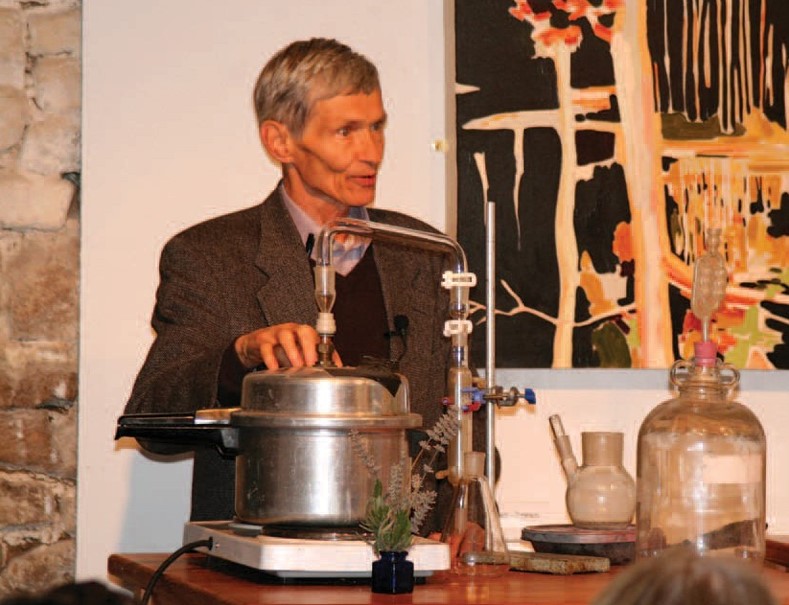
JC And then in time one has the sense that these Earth, Water, Air, Fire, Salt, Sulphur, and Mercury, start to lead to a rational understanding of what the preparations are based on. Whereas prior to that, it is not quite so clear maybe.
But as a lens to the preparations, you realize that there is an alchemical principle there that can open that doorway a bit more.
DK That’s reasonable, that’s not just the idea that “Well, Rudolf Steiner did it, but we have no idea why he did it, but this is the way to do it.” I have seen wine growers in California say things like that when a newspaper man came out and asked “Well why do you do this?” If the grower can have even a bit of rational thinking behind why they put cow manure in a horn, instead of going “Well Rudolf Steiner said to do this”, they can give an intelligent answer out of their own understanding. Then biodynamics can get a firm footing in the public domain.
RS This is what we battle with here with our communication you know. You can go so far and then you hit this, and you can’t get beyond it.
JC Well I think it is a great question. I mean how do you work with those alchemical principles so that they actually become a capacity or a tool. Because I think there is still a lot of bias against the word alchemy if you are in some circles. But my sense of it, and this is also through Enzo’s work, is that Steiner does not have a linear view of the history and philosophy of science. He does not just put alchemy back in the 1500s and say, “Right we’ve moved on.” It is a much different view of science.
So it is to say that alchemy is a lens that has a very contemporary, even future role to play. But it is not also an either/or with the rigor of analytical science because the two are compatible. My experience of alchemical thinking is that it puts some of the layers back in that science left out.
RS Another aspect that you mentioned at the weekend was right timing. Knowing exactly which planet is on the horizon. If you are working purely according to the calendar, you do not consider that, so one needs to develop an intimate awareness of the heavens. 4
DK Absolutely! That’s the priestly nature.
RS At Wala, right timing is part of their medicine and elixir-making process.
DK So they are using the laboratory bench as an altar then! They are trying to bring the Christ principle into the making of their medicines. I mean we could look and say, “Well they’re just making good pharmaceuticals.” Yes, but why do they do it when the sun is rising and the sun is descending. Steiner said that is when the Christ forces are operating.
The forces that will enable humans to lift their consciousness into the realm of what could be rather than the realm of what is. They begin to experience how the society they are living in could be. I think the struggle is to understand this kind of concept and not resort to saying the good doctor has said so.
RS How can biodynamics be a potent force in a hungry world? We hear on the news all the time of food shortages, food poverty and so on. The response is usually to go straight to for example GM as a solution. Do you have any comments on that?
DK That goes back again to the whole priest thing. Biodynamics is not just about growing food, it is the understanding that food grown in a way enables the person not just to have more protein. The growers that I work with they say, “In order to reach the public we have to say that with biodynamics, the food has more nutrients.”
You can pack food with nutrients until the cows come home. The food industry does that all of the time. It is not a question of having more nutrients but rather one of availability of nutrients. And that question of availability is a question of a dynamic within the foodstuff. A question of a dynamic is a question of a rhythm.
So we are really bringing consciousness when we are working with the land, to making the land firstly an organ of perception for the cosmos that is just a really good organic process. Humus is the vehicle where the plant begins to interface with the cosmos. So good humus is good organic practice. Beyond this good practice, it is a matter of then creating the farm individuality as the basis for the economy on the farm that you are using. This then makes the land we are using have the quality of being. And the quality of being is sentience – the sensitive.
So with the parts of the land that you are working, one part becomes sensitive to another part. You become sensitive to where there are forces that are locked, simply by walking out on it. You begin with your consciousness being lifted into the sentient activity of the beings that live in the place where you work and the agricultural individuality works in you, especially if you consume the food.
So if you consume the food from the land, the beings that live in that consciousness on the land, go into your consciousness and then you walk the land and put preparations on it. There is a deep kind of sympathy and resonance that begins to develop.
If that happens then you can offer the surplus to others and they begin to participate in that, even though they are not carrying the consciousness.
If you provide that food and they begin to eat that food over time, the food itself, which is there because you have made this sacrificial union, will allow them to grow to consciousness, where they begin to have this same perception of the same thing.
And so in plant food especially, the fluids in the plant have sensitive capacities. And the more we become sensitive the more we will choose food that has good rather than poor nutrition. Unfortunately, the mystery training is always only for those who are willing to undergo the apprenticeship of ‘feeling stupid’ for a very long time, and not many people are willing to do that.
So they would rather eat fast food and media, and try to make a buck, and have a sixer before they go to bed or wake up. And that is a choice; everybody is free to make that choice.
But if you choose to work this way, then there are certain requirements just like there were in the past. And that means you have to understand a little more about what it is that you are doing than just applying bags of urea. It has a whole other level.
RS So the way is through doing?
DK Related to doing, so as you become more adept at that and the food becomes more capable of listening to these things that are coming into the cosmos, and that starts to go out among people and through good food, people eventually find one another. The purpose of nutrition is not just to build your body; it’s actually to enliven consciousness.
And if growing plants is done rhythmically, if the plants are in tune with the cosmos, then the food we’re eating gives us a kind of sensitivity to that dimension of how things change and then you have just a little bit more of a resilience when it comes to being afraid of the unknowns in life.
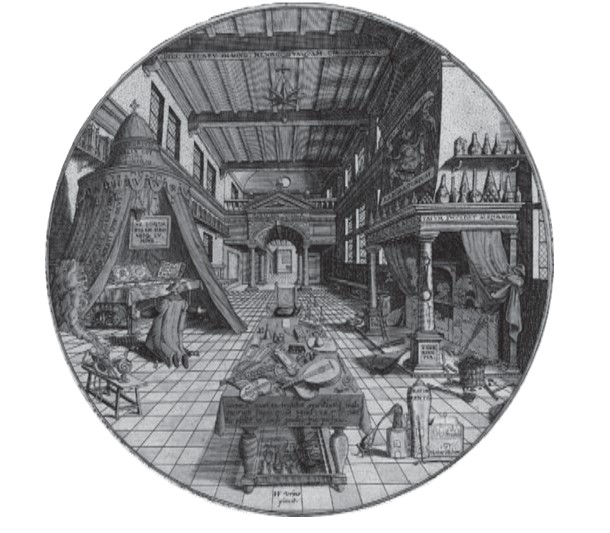
RS How do you see the future?
DK Yes, the future. We have kind of a convenient fable, in the culture that things are so different now from past times. That we’re off the charts with supreme development. And in one way I see that as true, but in another way, I always say if you were a monk in a monastery in the fourth century and the Huns came across the hill, it would be the same as living today in the shadow of cultural, economic and mass emotional breakdown. There is an old folk song that goes “there’s no hiding place down here.”So, you know, if you have a certain way of being and suddenly that gets taken away from you or that gets jeopardized, you’re still in a strange position the way that the monks were threatened in their monasteries when the hordes invaded. The advantage that the monks had was that if they left en masse they left with all the people that knew how to grow the food.
So I see in the future, that it will still come down to growing food. We used to live about 40 miles south of New York City, in New Jersey. And the convenient fable for people at that time was that if anything cataclysmic ever happened in New York, there would be just enough time for all the ne’re do wells, to have a tank of gas and drive about to where we were, and the garden that we had, that we were so careful in tending, would simply become food for the Huns. You know, and we would have to be out there with a stick. That was an urban legend.
You know food will always be the bottom line, there is just no way around it. So, the people who are engaged in food production, if things get really bad, they are going to have to learn how to teach instead of just being workers. Agriculturalists will have to learn to be more like priests and monks of the Middle Ages and tend to the souls of the people at the same time that they are tending to the soul of the land. ■
Dennis’s recent workshop ‘Biodynamic Agriculture as an Alchemical Path’ was arranged by the Field Centre at Ruskin Mill in Gloucestershire. An article about the planning for this new building appeared in Issue 115 of the Star and Furrow. By the next issue it will have been completed and we will carry a detailed feature on it. You can read more about its progress as well as the courses they arrange at www.thefieldcentre.org.uk
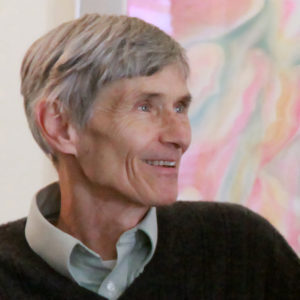
Dennis Klocek
Dennis Klocek, MFA, is co-founder of the Coros Institute, an internationally renowned lecturer, and teacher. He is the author of nine books, including the newly released Colors of the Soul; Esoteric Physiology and also Sacred Agriculture: The Alchemy of Biodynamics. He regularly shares his alchemical, spiritual, and scientific insights at soilsoulandspirit.com.
Similar Writings
Wednesday of Holy Week
In this session, I will combine Wednesday and Thursday. We will focus on work and prayer. Work is in the lower right. That is the upward pointing triangle with the lightning bolts. Prayer is in the Star of David on the trunk of the tree with the starry realm around it and the zodiac symbols…
Earth Consciousness
The picture is an image of stars falling out of the sky as snow and then falling to earth as crystals. From the point of view of alchemy my thinking is creative when it is focused on the cosmic or starry dimension of my life. That is the source of solutions to my issues. Alchemically,…
